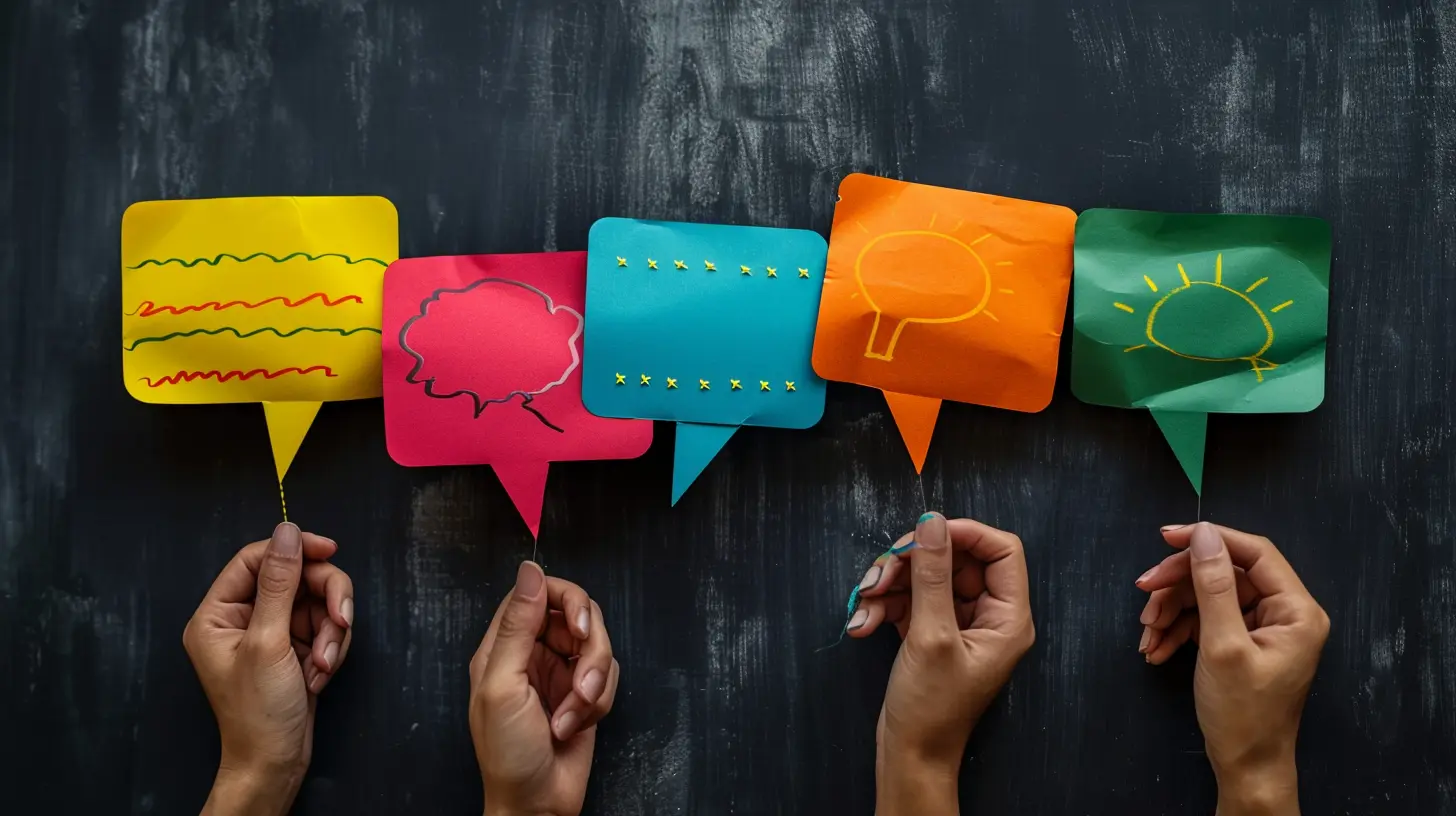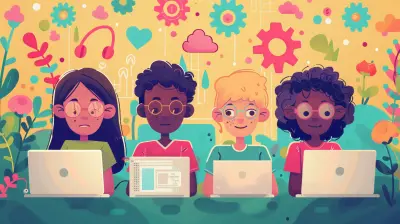29 May 2025
Learning is a lifelong journey. Whether you're studying for a degree, picking up a new skill, or simply trying to broaden your horizons, one thing holds true: feedback is essential. But here's the thing—feedback can often feel like a bitter pill to swallow. We've all been there, right? You pour your heart and soul into something, only to be told how you could’ve done it better. Ouch! But here's the good news—when used effectively, feedback can be one of the most powerful tools for improving your learning experience.
In this article, we'll dive deep into how you can use feedback to not just survive, but thrive in your learning endeavors. By the end, you’ll see how feedback is less about pointing out mistakes and more about refining your skills and knowledge, pushing you closer to your goals.

What Is Feedback?
Let's start with the basics. Feedback is essentially information provided to you about your performance or understanding, with the intent to help you improve. It comes in many forms—comments from a teacher, constructive criticism from peers, or even self-reflection after completing a task.Feedback isn't limited to just formal education either. You can get feedback at work, from friends, or even through the results of a personal project. But the real magic happens when you take that feedback and use it to sharpen your skills.

Why Feedback Matters
Why should you care about feedback? Can’t you just power through and improve over time? Well, yes, but feedback can speed up that process significantly. It acts like a mirror, reflecting back areas where you can improve. Without it, you might not even realize you're making the same mistakes over and over again.Think of feedback as a GPS for learning. Sure, you can drive around aimlessly and eventually reach your destination, but wouldn’t it be easier to have step-by-step directions guiding you? Feedback provides that route, helping you avoid wrong turns and wasted time.
The Role of Feedback in Active Learning
Active learning is all about engagement. Rather than passively absorbing information, you’re interacting with the material—asking questions, solving problems, and applying what you’ve learned. Feedback plays a vital role here because it keeps you on track, ensuring that your active learning efforts are both productive and meaningful.By receiving feedback, you’re able to immediately adjust your approach. Whether it's a project you’re working on or a skill you’re developing, feedback helps you stay aligned with your learning objectives.

Different Types of Feedback
Before we jump into how to use feedback, let’s quickly go over the different types of feedback you'll encounter. Understanding these will help you recognize feedback when you receive it—because, believe it or not, feedback isn't always handed to you on a silver platter!1. Positive Feedback
This is the feel-good stuff. Positive feedback highlights what you’re doing right. It reinforces correct thinking and behavior, motivating you to keep going. For example, if your teacher says, "Great job on your essay structure!" that's positive feedback.2. Constructive Feedback
Constructive feedback focuses on areas for improvement, but it’s not all doom and gloom. It provides actionable steps you can take to get better. For instance, "Your essay was strong, but your thesis could be clearer. Try rephrasing it to be more specific."3. Negative Feedback
Negative feedback is often the hardest to swallow because it focuses on what went wrong. But don’t dismiss it—it can be incredibly valuable. The key is to not take it personally and instead use it as fuel for improvement. For example, "Your essay was poorly organized and hard to follow."4. Self-Feedback
Yes, you can give feedback to yourself! This happens when you reflect on your work and notice areas for improvement. Self-feedback is a powerful tool, as it encourages self-awareness and critical thinking.5. Peer Feedback
Peer feedback comes from your classmates, colleagues, or anyone at the same level as you. It’s valuable because it offers a fresh perspective and can be less intimidating than feedback from an authority figure.6. Formal vs. Informal Feedback
Formal feedback is structured and often comes from someone in a position of authority, like a teacher or boss. Informal feedback is more casual, like a quick comment from a friend or colleague. Both are important, so don’t underestimate the value of a simple "Hey, you could improve this by doing X."
How to Use Feedback to Improve Your Learning Experience
Now that we’ve covered what feedback is and the different forms it can take, let’s talk about how you can actually use it to improve your learning.1. Shift Your Mindset
First things first—you need to shift your mindset. If you view feedback as criticism, you’ll be less likely to use it effectively. Instead, see it as an opportunity for growth. Every piece of feedback you receive is a chance to become better at what you do.Think of it like going to the gym. Sure, it's uncomfortable to push yourself, but it’s the only way to grow stronger. In the same way, feedback may be uncomfortable at first, but it’s essential for your intellectual growth.
2. Listen and Absorb
When you receive feedback, your initial reaction might be to quickly defend yourself or explain why you did something a certain way. Resist this urge! Instead, listen carefully and absorb what’s being said. Even if you disagree with the feedback, consider it thoughtfully before responding.If you're unsure about some of the feedback, don’t hesitate to ask questions. Clarifying the feedback ensures that you fully understand it, which is the first step in using it effectively.
3. Separate the Feedback from the Person
This is a big one—don’t take feedback personally. It’s not about you as a person; it’s about the work you’ve done. When you separate the feedback from your identity, it becomes much easier to digest and act upon.For example, if your writing needs improvement, that doesn’t mean you’re a bad writer. It just means there’s room for growth. And who doesn’t have room for growth?
4. Break It Down Into Actionable Steps
Receiving feedback can feel overwhelming, especially if there’s a lot of it. The trick is to break it down into manageable chunks. Identify the key areas where you can improve and focus on tackling them one at a time.For instance, if you’re told that your presentation lacked structure, you could break that down into specific steps like:
- Research better presentation outlines.
- Practice organizing your main points.
- Get feedback on your revised structure.
Small, actionable steps are far less intimidating and much easier to implement.
5. Use Feedback as a Reflection Tool
Feedback isn’t just about improvement—it’s also a great tool for reflection. When you receive feedback, take the time to reflect on your learning journey. Ask yourself questions like:- What did I learn from this feedback?
- How can I apply this feedback to future tasks?
- What patterns do I notice in the feedback I receive?
Reflection helps you internalize feedback, making it easier to apply it effectively in the future.
6. Practice Active Listening During Feedback Sessions
We often hear feedback, but do we really listen? Active listening means being fully engaged in what's being said, without distractions or preconceived judgments. When someone is giving you feedback, focus entirely on their words, ask clarifying questions, and summarize back what you’ve heard to confirm your understanding.7. Seek Out Feedback Regularly
Don’t wait for feedback to come to you—go out and get it! Actively seeking feedback shows initiative and a genuine desire to improve. Ask your teacher, boss, or peers for feedback after completing a task. The more feedback you get, the faster you’ll improve.Think of it like a video game—every piece of feedback is like a power-up that helps you level up. So, why wouldn’t you want to collect as many as possible?
8. Avoid Overthinking Negative Feedback
It’s easy to dwell on negative feedback and let it discourage you. But try not to overthink it. Remember, everyone makes mistakes, and no one expects you to be perfect. The important thing is that you learn from it and move forward.If you find yourself getting stuck in a negative feedback loop, take a step back and remind yourself of your progress. Focus on the steps you can take to improve, rather than obsessing over what went wrong.
9. Act on Feedback Quickly
The sooner you act on feedback, the more effective it will be. Don’t let feedback sit in the back of your mind for weeks. Instead, incorporate it into your next project or learning task as soon as possible. This will reinforce the new skills and knowledge you’re developing, making it easier to improve.10. Celebrate Your Wins
Feedback isn’t just about pointing out what you did wrong—it’s also about recognizing what you did right. So, when you receive positive feedback, take a moment to celebrate! Acknowledging your successes will keep you motivated and remind you that you’re on the right track.Conclusion
Feedback is like a roadmap to success. It helps you identify areas for improvement and gives you the tools to get better. But, as with any map, you have to be willing to follow it. By shifting your mindset, listening carefully, and acting on feedback, you can drastically improve your learning experience. So, the next time someone offers you feedback, don’t shy away from it. Embrace it, learn from it, and watch yourself grow!Remember, feedback isn’t a critique of who you are—it’s a guide to becoming the best version of yourself. Happy learning!








Kismet Yates
Feedback isn’t just helpful; it’s essential. Embrace criticism as a powerful tool for growth. Stop shying away from suggestions—dive in and transform your learning journey. Your future self will thank you!
November 14, 2025 at 5:25 AM